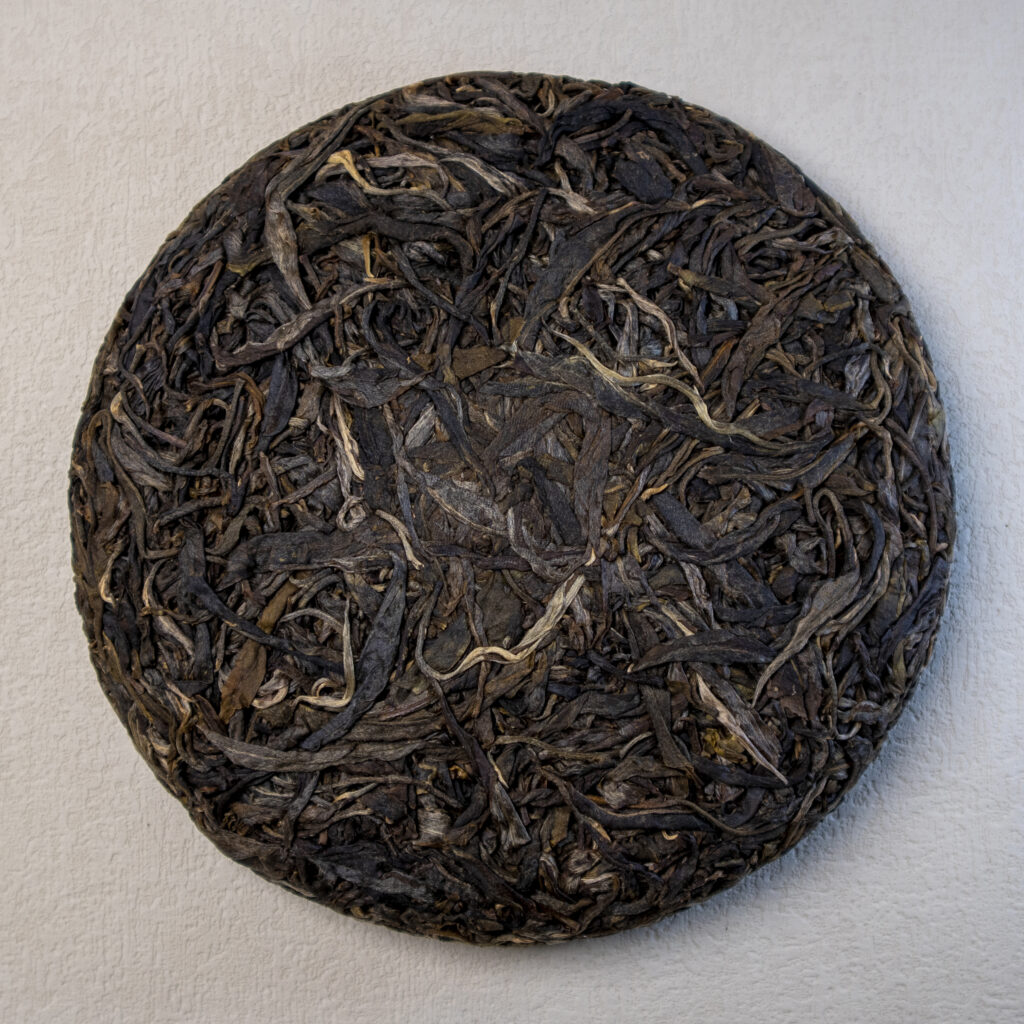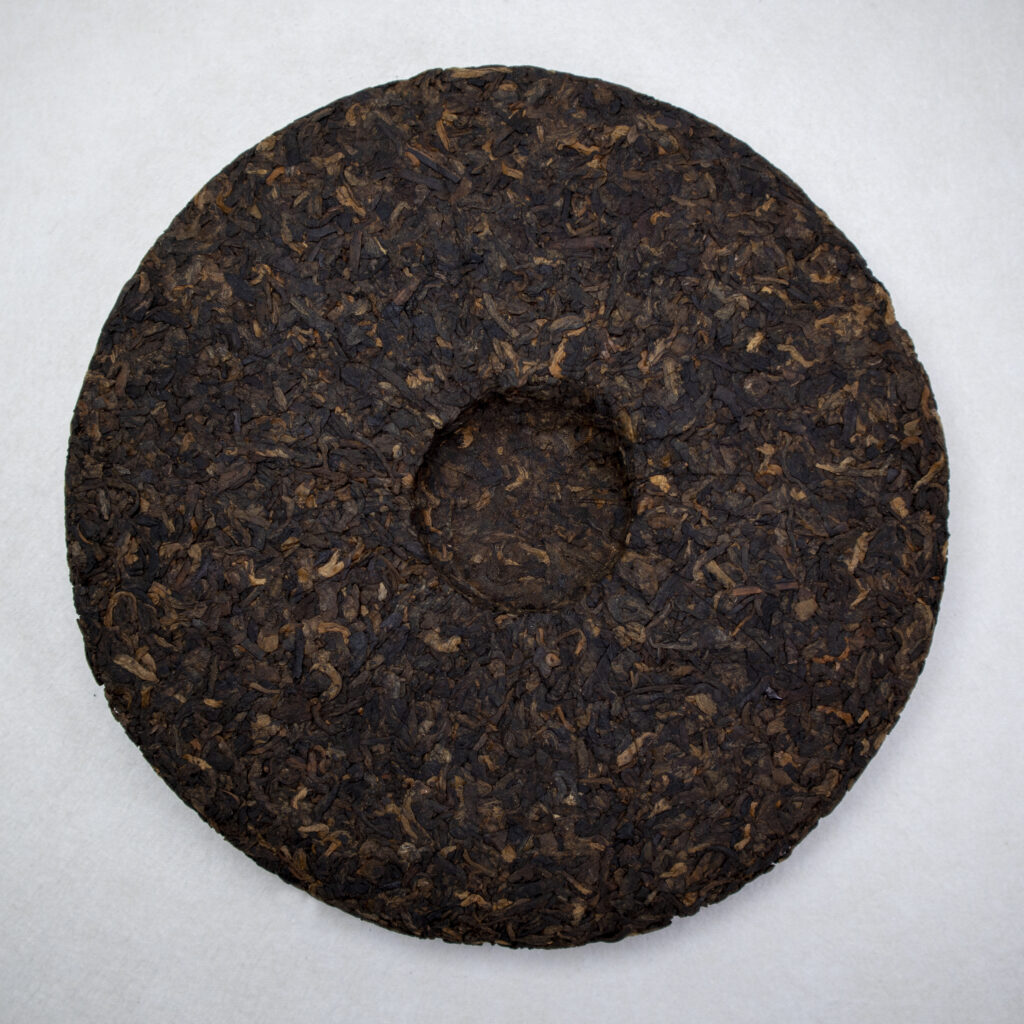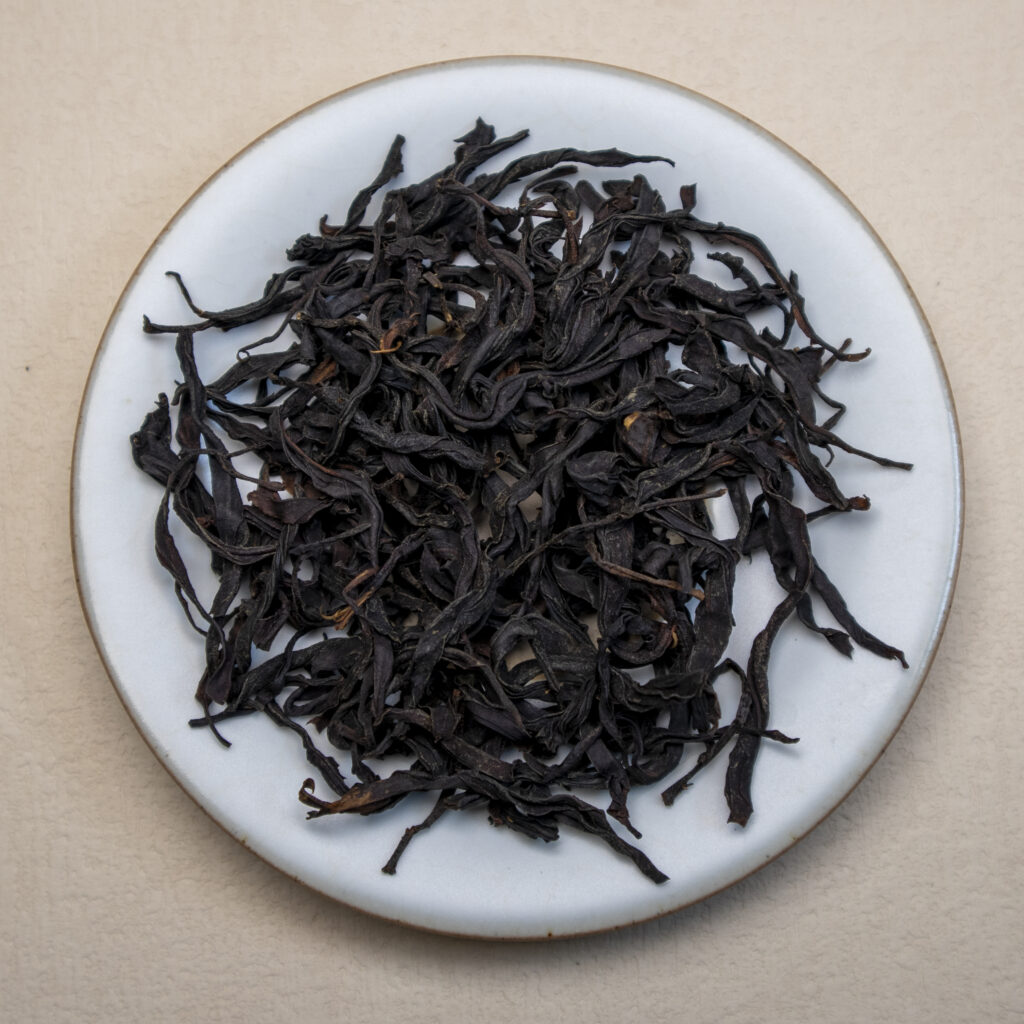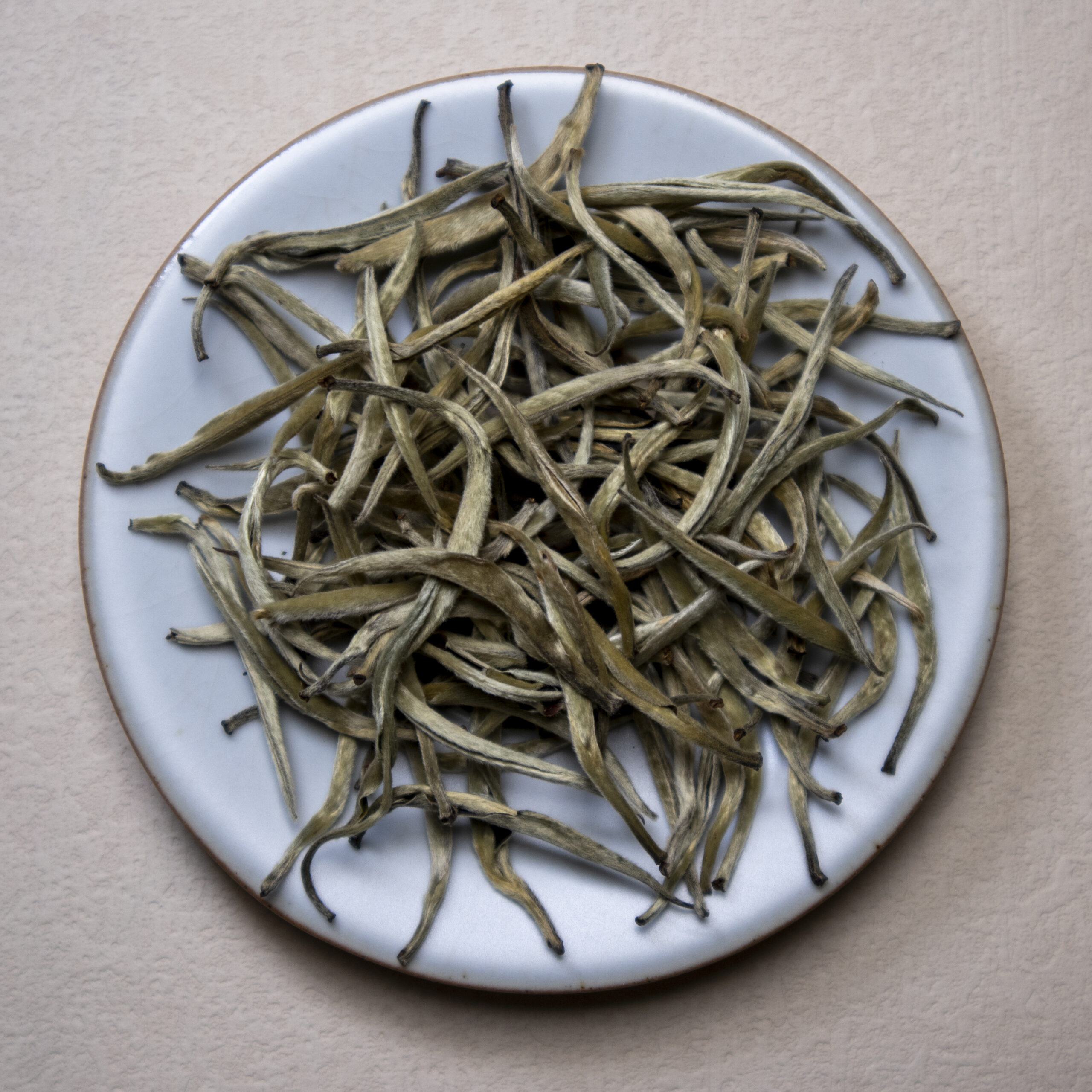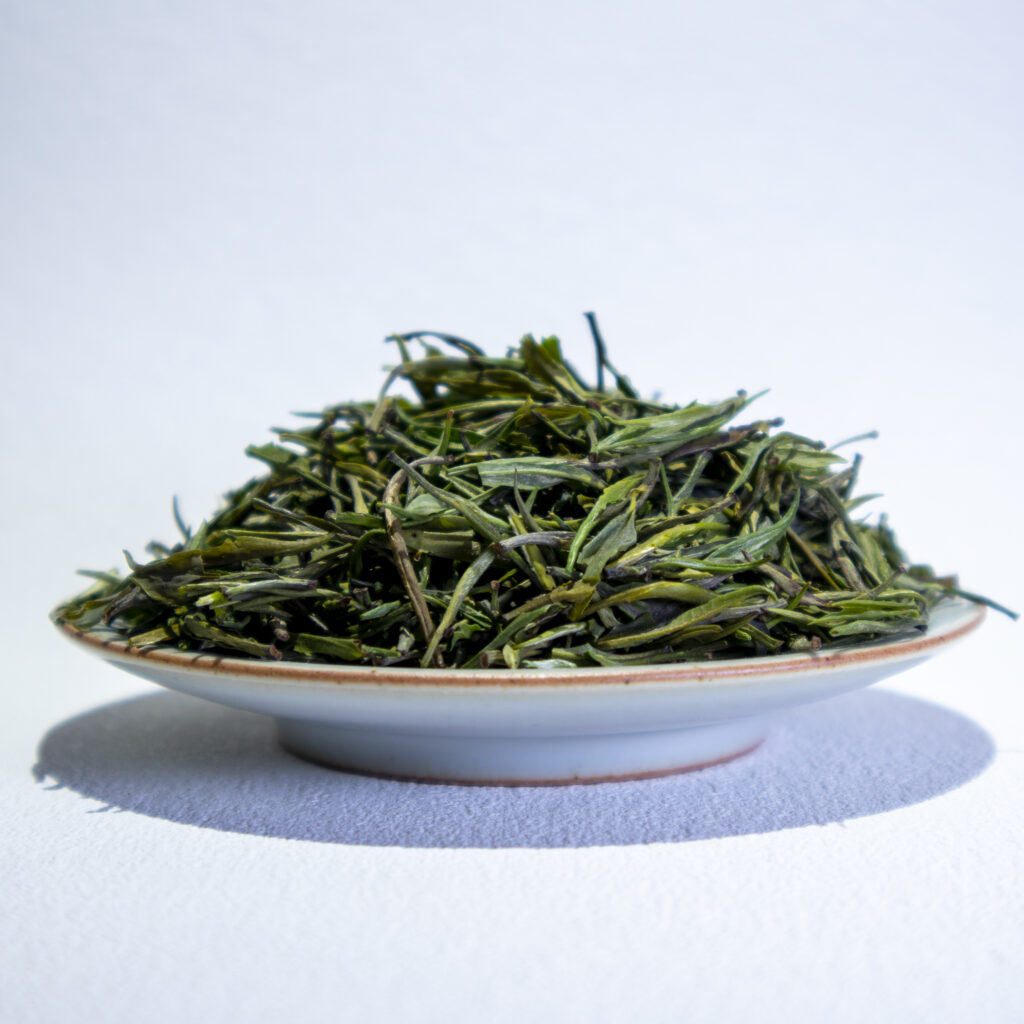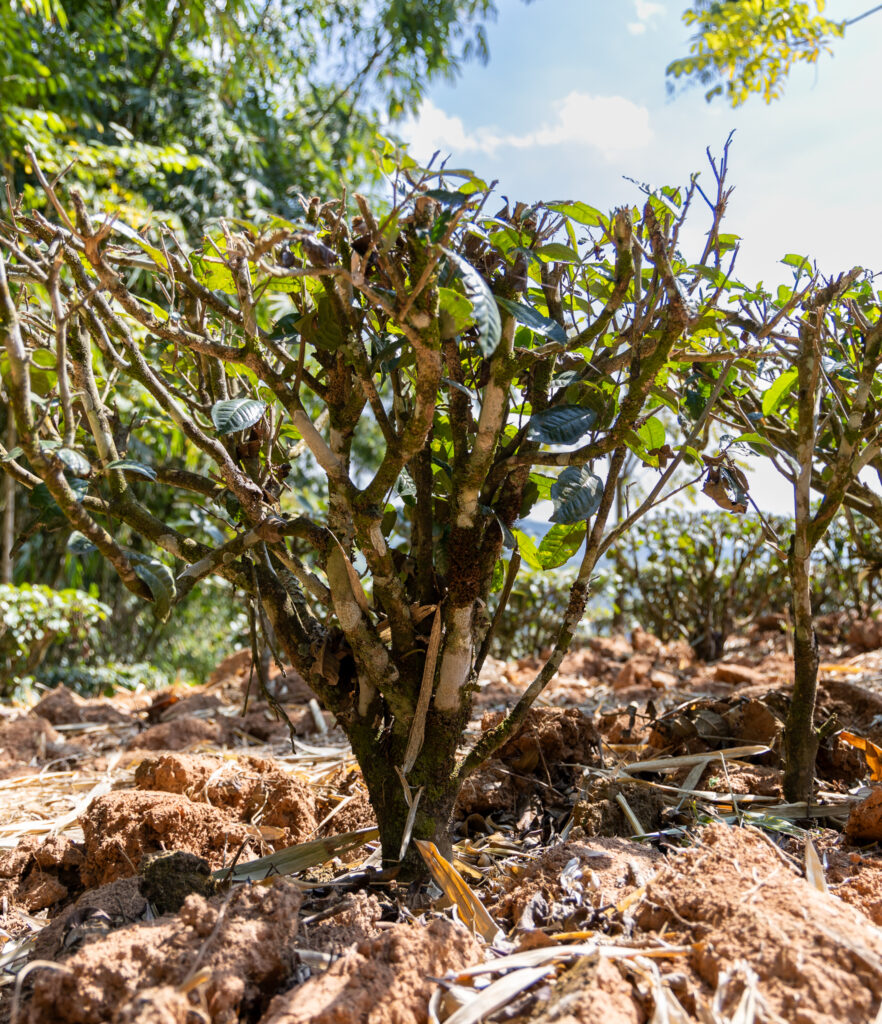Chinese Tea
Pu’er Raw(Post-fermented)Strong and wild
Our tea categories:
Settling Tea, Xigui, Mangfei, Laomane, Daxueshan, Xiaohusai and more.
Production process:
Cooling-ShaQing-Rolling-Dry.
Main nutrients:
Tea polyphenols (20%-35%), alkaloids (2%-9%), sugars (20%-30%).
Brewing method:
6-8g / 150-200ml, 95-100°C (204-212°F) water.
Taste:
Floral, fruity or honey fragrance. The new raw Pu’er tastes more bitter and astringent, hui gan quick and strong. The old raw Pu’er tastes more mellow and sweet, with obvious sweetness, smoothness and viscosity strengthening.
Pu’er Ripe(Post-fermented) Thick and smooth
Our tea categories:
Zhangxiang old tree, Gongting Pu’er, Mandarin ball and more.
Production process:
Cooling-ShaQing-Rolling-Pile-Fermented-Dry
Main nutrients:
Black tea pigment, yellow tea pigment, gallic acid, vitamin C, flavonoid glucoside
Brewing method:
6-8g / 150-200ml, 100°C (212°F) water (Better thick than thin for Ripe Pu’er).
Taste:
Wooden, Chinese dates or sticky rice fragrance. High viscosity, taste thick and smooth.
Black Tea (100% fermented) Smooth and sweet
Our tea categories:
Classic 58, Traditional Dianhong, Wild black tea, China Red and more.
Production process:
Withering-Rolling-Black tea ferment-Dry (Roast/sundried).
Main nutrients:
Carotene, leucine, glutamic acid, flavonoids, theaflavin thearubin (tea polyphenols decreased by 90%), aroma substances from fresh leaves in 50 kinds increased to more than 300 kinds.
Brewing method:
4-7g / 150-200ml, 90-95°C (195-204°F) water.
Taste:
Floral and fruity aroma, taste rich and full-bodied, sweet and smooth.
(Slightly fermented) Light and mild
Our tea categories:
Moonlight, Silver Needle and more.
Production process:
Withering-Dry.
Main nutrients:
Carotene: Polyphenols, caffeine, amino acids, vitamin P.
Brewing method:
5-8 g / 150-200ml, 95-100°C (204-212°F) water.
Taste:
Hao Xiang and floral fragrance, taste fresh and mellow, with long-lasting Hui Gan and obvious taste of Hao Wei (Hao Wei is same as Hao Xiang but in taste).
Green Tea (100% unfermented) Fresh and clear
Our tea categories:
Hong Qing.
Production process:
ShaQing-Rolling-Dry.
Main nutrients:
Tea polyphenols (85% of fresh leaves retained), caffeine (85% of fresh leaves retained), chlorophyll (50%).
Brewing method:
2-6 g / 150-200ml, 70-85°C (158-185°F) water.
Taste:
Clear and fresh fragrance, taste light and fresh, or sweet and mellow.
Tea Production Process
茶叶制作过程
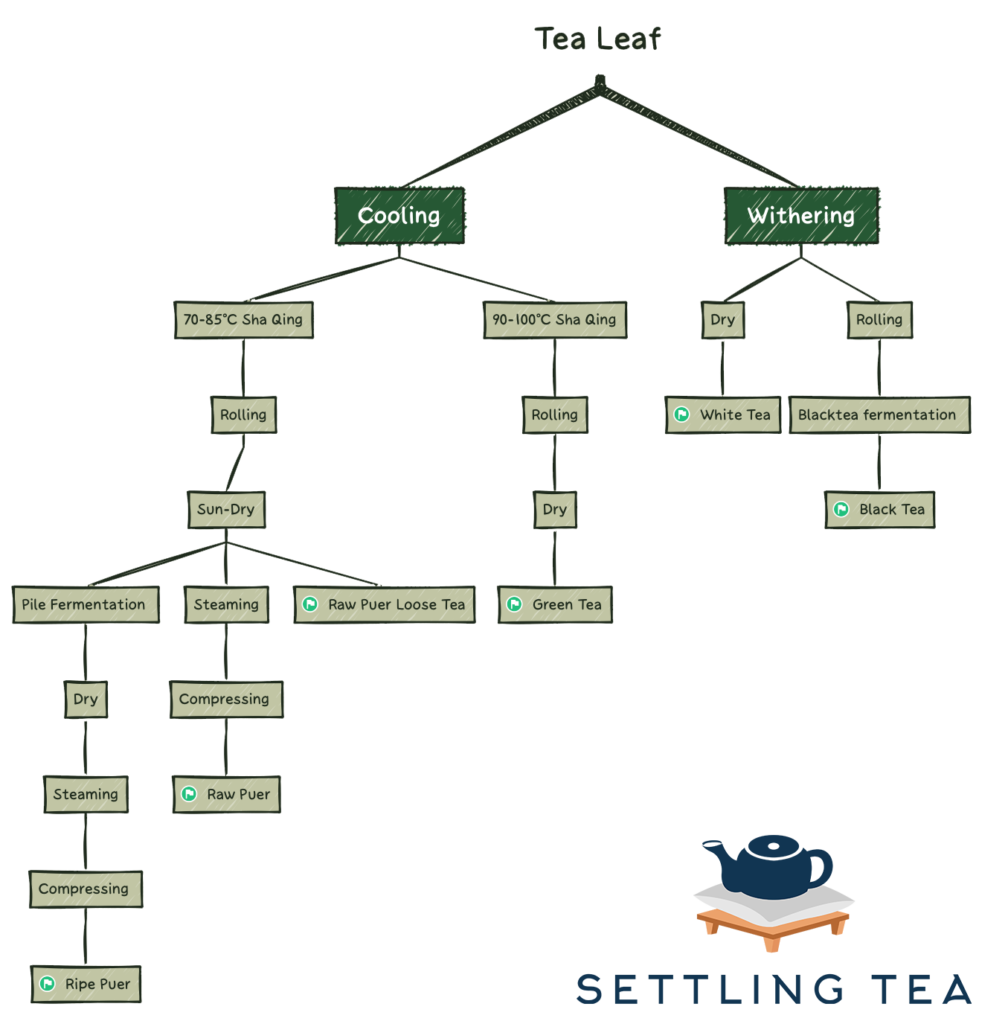
Chinese Tea Tree Types
Categories:
There are two general ways to classify tea trees by, either trunk size or leaf size. In addition to that they are also different types of trees in the trunk size and leaf size.
Trunk Size
Differences:
The taste difference is more important the appearance. Tree-type tea basically survives up to hundreds of years. It contains more inner substance and can always absorb more nutrition from the soil. But for the shrub type tea, it is mostly artificial cultivation planting nowadays, containing less nutrition. Therefore, the taste difference is much longer and stronger in the Tree-type tea, while the Shrub type tea is more fresh tasting.
Appearance:
Tall trees, obvious thick trunks and high branching parts. harder to pick tea leaves due to its height. These wild tea trees grow in primeval forests in Yunnan. If left to grow in nature undisturbed they can reach up to 10 meters in height.
Taste:
Strong and rich, the tea broth is thick and rich in layer. Strong permeability, Hui Gan, pectin texture and good viscosity. Contains more inner substances, so the tea brewing infusion times are lot more than that of shrub-type tea trees.
Appearance:
Short in shape, with no obvious trunk and low branching parts. Comes with a lot more branches, dense sprouting and much easier to pick tea leaves. Originally Tree-type tea tree that has changed its appearance due to its geographical location growing further north, impacted with lower temperature and dryness the tree became shorter, and gradually evolved into a shrub-type tea tree.
Taste:
Soft and mellow, slightly weaker stimulation of the tea broth. Fresh aroma, short retention time. Heavier astringency than its predecessor (Tree-type tea tree).
Leaf Size
Leaf categories:
In order to distinguish the cultivated tea varieties, the actual production is divided into large-leaf species, medium-leaf species and small-leaf species, by the size of the leaf (leaves that have grown, set and will not change in size).
Differences in inner substances:
– Generally, large-leaf is richer in inner substances than medium- or small-leaf tea, also contains more caffeine and tea polyphenols, which are the main taste and functional components of tea leaves. (This is what accounts for a higher proportion of inner substances)
– Large-leaf contains more amount of catechins and ester-type catechins. (The main functional components of tea polyphenols)
– Medium- and small-leaf have a higher content of amino acids and theanine than large-leaf, due to the vigorous nitrogen metabolism and amino acid metabolism.
– Small-leaf contains the highest number of carotenoids and luteolin compared to large- and medium-leaf. These terpene derivatives can be decomposed into aroma substances such as β-ionone and theaspirane, making small-leaf richer in aromatic substances.
Appearance:
Leaf size between 28 c㎡ to 50c㎡ is classified as a large tea leaf.
Taste:
Strong and intense; the richness of this type will also allow you to brew the leaf for more times.
Due to its high amount of tea polyphenols, it also has an exceptional long storage life. The longer you store Large-leaf type under proper storage conditions, the taste of the tea will become more mellow and rich in layer.
Appearance:
Leaf size between 14 c㎡ to 28c㎡ is classified as a medium tea leaf.
Taste:
High level of astringency, and low level of bitterness.
Aroma level is in-between the large and small-leaf size.
Quick Sheng jin feeling when drinking tea from medium-leaf size.
Small-Leaf
小叶种

Appearance:
Leaf size less than 14 c㎡ is classified as a small tea leaf.
Taste:
Fresh and sweet. Richer aromatic substances also directly make the small-leaf tea aroma more diverse and thicker.
Sources of Bitterness and Astringency in Tea
The source of bitterness and astringency in tea are mainly related to 3 internal substances: alkaloids (theophylline, caffeine), tea polyphenols, and glycosides. These substances are high in the fresh buds and low in old leaves.
Alkaloids composition is stable and slow to fade out, it is the main source of bitterness in tea and more related to the origin and type of tea leaves, this type of bitterness does not slowly diminish with time. Caffeine in alkaloids can form complexes with tea polyphenol-oxide hydrogen bonds with a refreshing taste, this is one of the main reasons for the refreshing taste in tea from a sensory point of view. For example, the bitter tea of Laomane, it is bitter but also very refreshing and long-lasting.
Tea polyphenol is an assembly of more than thirty polyphenols in tea, mainly including four categories of substances such as catechins, flavonoids, anthocyanins and phenolic acids. It is the main source of tea astringency, so the amount of tea polyphenol content also determines the degree of bitterness in the tea. Bitterness and astringency brought by tea polyphenols can be converted by time conversion and the ratio of tea polyphenols to amino acids. The oxidation of tea polyphenols will break down into different substances of theaflavin and thearubigins, thus reducing its bitterness and astringency feeling. When the ratio of tea polyphenols to amino acids in tea is low (the content of amino acids and polyphenols are both high), the bitterness and astringency can be quickly dissolved. However, if the ratio of amino acids to tea polyphenols is high, such as summer tea with high tea polyphenol content and low amino acid content, the bitterness will always be present and difficult to melt away.
Glycosides are composed of three parts: saponin elements, glucose, and organic acids. In the process of drinking tea, the glycosides absorb heat and decompose into three parts. The organic acid brings a certain bitterness, but it also stimulates the salivary glands to secrete and helps the bitterness melt away. Glucose adds sweetness to the tea.
“A good tea is bitter in the mouth and sweet in the throat”.

